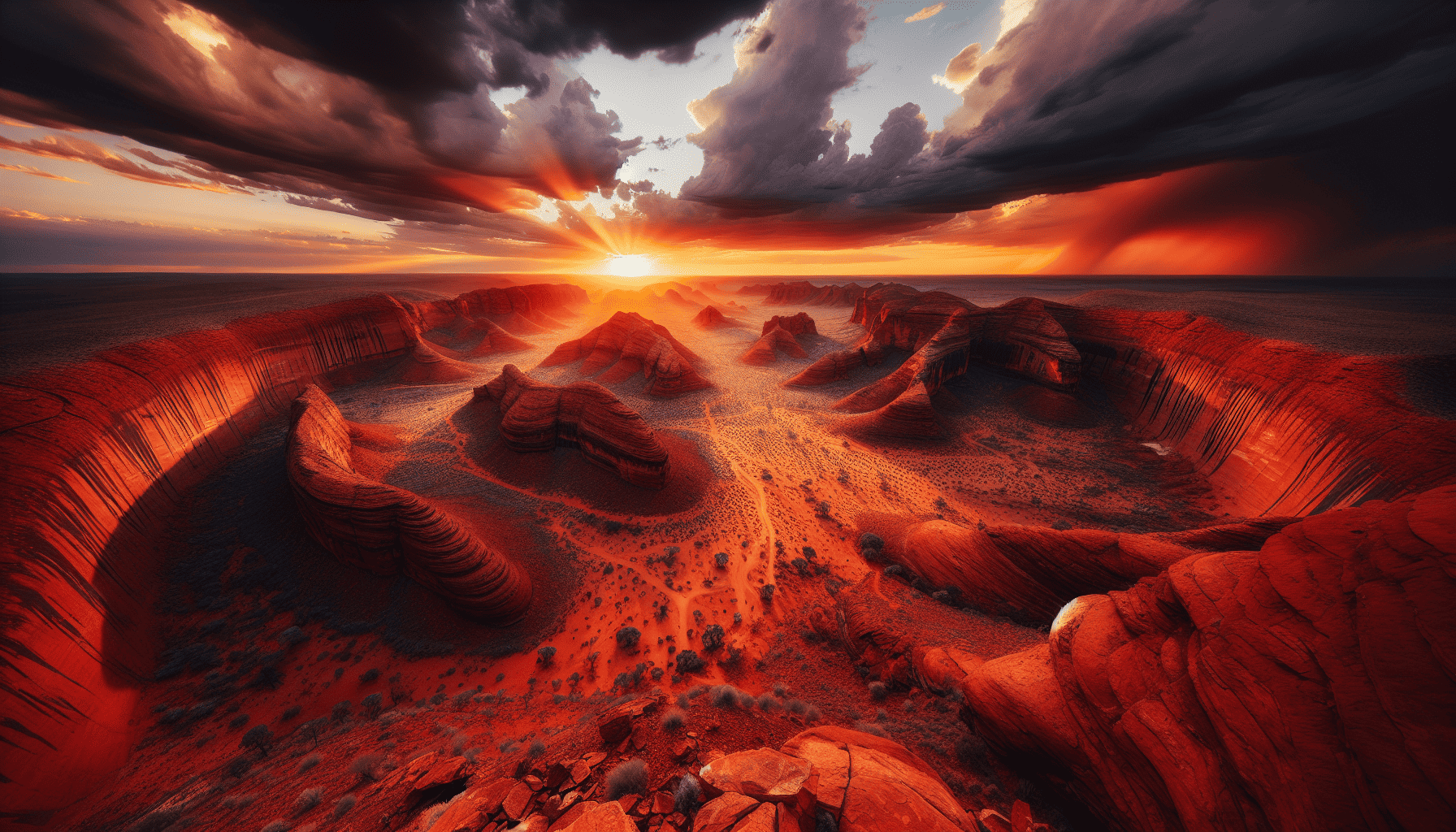The Australian Outback is a realm where the infinite horizon marries with the earth’s vivid palette, offering a spectacle only nature can compose. It's a land of extremes, where the land stretches to meet the sky, and the silence is as profound as the visual expanse before you. Capturing the essence of the Outback is both an art and a challenge, inviting adventurers and photographers alike to explore its vastness.
As your journey commences, you'll notice the ever-changing tones of the landscape. The red sands of Uluru radiate a golden glow in the morning light, gradually darkening to a fiery crimson as the day progresses. To capture such dynamic beauty, timing is everything. Sunrise and sunset are your closest allies, the softer light helping to exaggerate shadows and highlight the Outback’s textures. These magic hours cast long shadows, increasing depth and dimension, necessary elements for a striking photograph.
When capturing landscapes in such remote areas, a robust understanding of your photography equipment is key. Wide-angle lenses are particularly effective in these settings, allowing you to embrace the vast stretch of the Outback and its rugged terrains in your frame. The use of a tripod will stabilize your shot, especially useful during the low-light conditions of dawn and dusk. Consider utilizing polarizing filters to reduce glare and enhance the intensity of the natural hues, bringing out the rich reds and deep blues that characterize the Outback.
The Outback is not only about vast open spaces but also rich in unique natural features. The opal fields of Coober Pedy, the dramatic rock formations of Kata Tjuta, or the sprawling plains of Nullarbor provide distinct backdrops for creative compositions. Moving closer, details emerge. The resilience of the native flora and fauna stand in stark contrast to the harsh environment, offering compelling subjects. Macro photography can reveal the intricate patterns of spinifex grasses or the iridescent colors of a desert butterfly’s wings.
Experimenting with techniques such as long exposure can add an artistic twist. Capturing the star-laden night sky above the Outback's desert is a humbling experience. Away from light pollution, the Milky Way spills across the sky, its clarity hinting at the infinite possibilities of the universe. Use long exposure to your advantage here, creating striking images of star trails that map the rotation of the earth.
Amidst its raw beauty, the Outback tells stories of ancient times and modern adaptations. Incorporating these narratives into your photographs brings another layer of depth. Indigenous rock art, hundreds of years old, offers glimpses into the history and culture of Australia's First Peoples. These sacred sites, like those found in Kakadu National Park, require sensitivity and respect. Always seek permission and guidance when photographing places of cultural significance.
The landscapes of the Australian Outback evoke a profound sense of solitude and reflection. Its vast spaces draw you into a world where time seems to stand still, and the spirit of adventure thrives. Photographing these landscapes is not just about capturing an image; it's about savoring the moment and translating the raw beauty of the Outback into a visual story that speaks to the heart.
In undertaking this journey, you become part of a legacy, weaving your experiences into the fabric of this ancient land. Each photograph is a testament to the Outback’s enduring allure and a reminder of the natural world’s relentless beauty. Let your camera be the bridge between the seen and the unseen, the known and the unknown, guiding you through the breathtaking mysteries of the Australian Outback.
